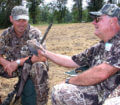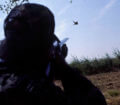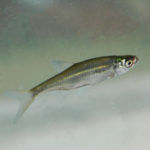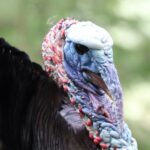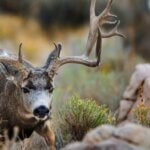My dove-hunting education while growing up began in a suburb of Birmingham, Alabama, called Wylam, about a block from my home. There was a big pasture with some hardwoods scattered throughout and a large reclaiming plant on one side, both owned by U.S. Steel. This area was a gathering place for elementary school boys to hunt, with us progressing from BB guns to .22 rifles and finally to .410 shotguns. Our number-one target was doves. Since none of us ever had been on a real dove shoot, to get the respect of our peer group and our families, we had to learn how to hunt doves and not just shoot them. Back then we never thought about hunting deer, because at that time the State of Alabama was beginning its deer-restocking program to hopefully one day have huntable populations of deer statewide. I soon learned that by studying the doves and making mental notes about them of where, when and why they flew somewhere at certain times of the day, I could increase my odds for taking these gray ghosts of the skies more frequently.
 September generally begins dove-hunting season. This month in many parts of the country, September weather is much like that of July and August – very hot. As a boy, I learned that one of the doves’ major needs was water – especially in hot weather. They’d come to water all during the day. So, one of the most consistent places I could take a stand for doves was around a water hole. The most-difficult doves to take back then were power-line doves that lit on the power lines to spot any danger in the field before flying to their destinations. For an opportunity to take a dove, we often had to belly crawl 100 yards to get close enough to take a sporting shot when the dove was in flight.
September generally begins dove-hunting season. This month in many parts of the country, September weather is much like that of July and August – very hot. As a boy, I learned that one of the doves’ major needs was water – especially in hot weather. They’d come to water all during the day. So, one of the most consistent places I could take a stand for doves was around a water hole. The most-difficult doves to take back then were power-line doves that lit on the power lines to spot any danger in the field before flying to their destinations. For an opportunity to take a dove, we often had to belly crawl 100 yards to get close enough to take a sporting shot when the dove was in flight.
In those early days of my hunting career, I heard many stories about the Great Depression of the 1930s and how difficult getting food was in those days. In our home’s yard, my parents had a garden, a chicken house and rabbit hutches to provide most of the food that we ate. The meat that wasn’t raised in the backyard was taken by my dad when he was hunting or fishing. He passed down the legacy of hunting, fishing and eating wild meat and fish to me at a very-early age.
 So, when I went dove hunting, all the birds I took, even if it was only two or three, were cleaned and prepared for cooking as soon as I arrived home. Most of the time within a day or two after my hunt, we’d have doves and gravy, white bread and some vegetables from the backyard. We also hunted and ate squirrels and rabbits.
So, when I went dove hunting, all the birds I took, even if it was only two or three, were cleaned and prepared for cooking as soon as I arrived home. Most of the time within a day or two after my hunt, we’d have doves and gravy, white bread and some vegetables from the backyard. We also hunted and ate squirrels and rabbits.
Later on when Alabama’s deer and turkey populations began to grow, I used many of the same dove-hunting tactics I had learned in elementary school to harvest this wild game. I learned that many of the hunting strategies could transfer successfully from one game species to another, including doves, ducks, deer, small game, turkeys and even big game in the West.
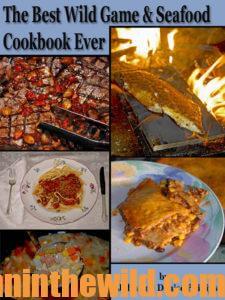 To learn delicious recipes for preparing doves, see John and Denise Phillips’s “The Best Wild Game and Seafood Cookbook Ever: 350 Southern Recipes” at https://www.amazon.com/Best-Wild-Game-Seafood-Cookbook/dp/0692234683. To see others of John’s books on hunting, go to https://johninthewild.com/books/.
To learn delicious recipes for preparing doves, see John and Denise Phillips’s “The Best Wild Game and Seafood Cookbook Ever: 350 Southern Recipes” at https://www.amazon.com/Best-Wild-Game-Seafood-Cookbook/dp/0692234683. To see others of John’s books on hunting, go to https://johninthewild.com/books/.

